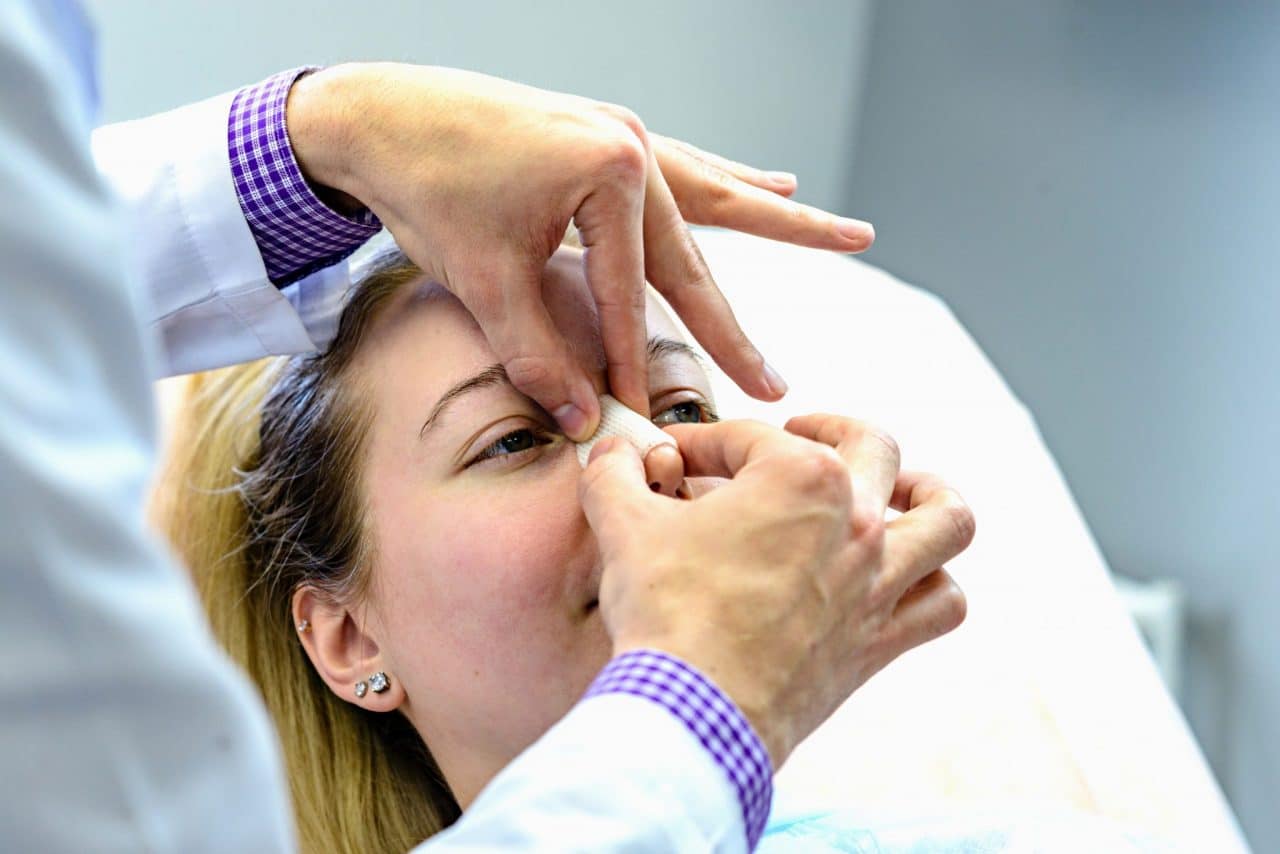What Causes a Nasal Fracture?
Also commonly known as a broken nose, a nasal fracture is a break or crack in the bone in your nose, which is often known as a fractured nose. Contact with a fixed object, such as a door or wall, can cause a break. Contact sports (like hockey, wrestling, basketball and football) and motor vehicle accidents are common causes of a broken nose.
What Are the Symptoms of a Nasal Fracture?

Pain when touched, swelling, a noticeable curve or dent in the nose and bleeding from the nose are common symptoms of a nasal fracture. If you have a nose injury along with difficulty breathing, bleeding and a noticeable change in the shape of your nose, you should seek medical attention.
To confirm a nasal fracture, your provider will perform a physical exam. Topical anesthetics may be applied before the physical exam to control the pain. An imaging test is usually unnecessary, though a CT scan may be required if other injuries are present.
How Is a Nasal Fracture Treated?
The treatment for a nasal fracture depends on the severity. A minor fracture that has not changed the shape of your nose may not require treatment at all. Larger breaks will require your provider to realign your nose manually. This procedure is often performed in the office with topical, injected anesthesia or both.
For severe breaks, your provider may recommend a surgery known as rhinoplasty.
When Should I See a Provider?
If you’ve been struck in the nose, it’s important to see a physician to check for septal hematoma. Seeing your primary provider or an emergency room physician is usually adequate to determine if you have a septal hematoma or other associated problems from your accident. If a septal hematoma is present, it must be treated promptly to prevent worse problems from developing in the nose. If you suspect your nose may be broken, see an otolaryngologist-head and neck surgeon within one week of the injury. If you are seen within one to two weeks, it may be possible to repair your nose immediately. If you wait longer than two weeks (one week for children) you will likely need to wait several months before your nose can be surgically straightened and fixed.
If left untreated, a broken nose can leave you with an undesirable appearance as well as permanent difficulty in trying to breathe.
How Will My Provider Determine if I have a Broken Nose?
Your provider will ask you several questions and will examine your nose and face. You will be asked to explain how the fracture occurred, the state of your general health, and how your nose looked before the injury. The provider will examine not only your nose, but also the surrounding areas including your eyes, jaw, and teeth, and will look for bruising, lacerations, and swelling.
Sometimes your physician will recommend an x-ray or computed tomography (CT) scan. These can help to identify other facial fractures but are not always helpful in determining if you have a broken nose. The best way to determine that your nose is broken is if it looks very different or is harder to breathe through.
What Are My Treatment Options?
If your nose is broken but not out of position, you may need no treatment other than rest and being careful not to bump your nose.
If your nose is broken so badly that it needs to be repositioned, you have several options. You can have your nose repaired in the office in some situations. Your provider can give you some local anesthesia, reposition the broken bones into place, and then hold them in the right location with a “cast” made of plastic, plaster, or metal. This cast will then stay in place for a week. In the first two weeks after the injury, your provider may offer you this kind of repair, or a similar approach using general anesthesia in the operating room.
What If I Need Surgery?
If more than two weeks have passed since the time of your injury, you may need to wait a while before having your nose straightened surgically. It may be necessary to wait two to three months before a good repair can be done, by which time there will be less swelling and your nose will have begun to heal. Reduced swelling will allow the surgeon to get a more accurate picture of how your nose originally looked. This type of surgery is considered reconstructive plastic surgery, as its goal is to restore your appearance to the way it was prior to injury. If your repair is done within two weeks of the injury, restoring prior appearance is the only possible goal. If you have waited several months for the repair, it is often possible to change the appearance of your nose as you desire. Should you be interested in this kind of appearance change as well as repair, you can feel confident that your otolaryngologist is a specialist in all surgery of the nose. No other specialty has more training in surgery on the nose, and some otolaryngologists focus exclusively on plastic surgery of the face.
Call Dubuque ENT at (563) 588-0506 for more information or to schedule an appointment.